I Yelled at My Dog and He Peed [Understanding Your Pet’s Anxiety]
Imagine this familiar scenario: you’re trying to get your dog’s attention, but they’re not listening. In a moment of frustration, you raise your voice and yell at them. Suddenly, your furry friend has an unexpected reaction – they pee right then and there!
This might leave you wondering, “Why did my dog pee when I yelled at them?”
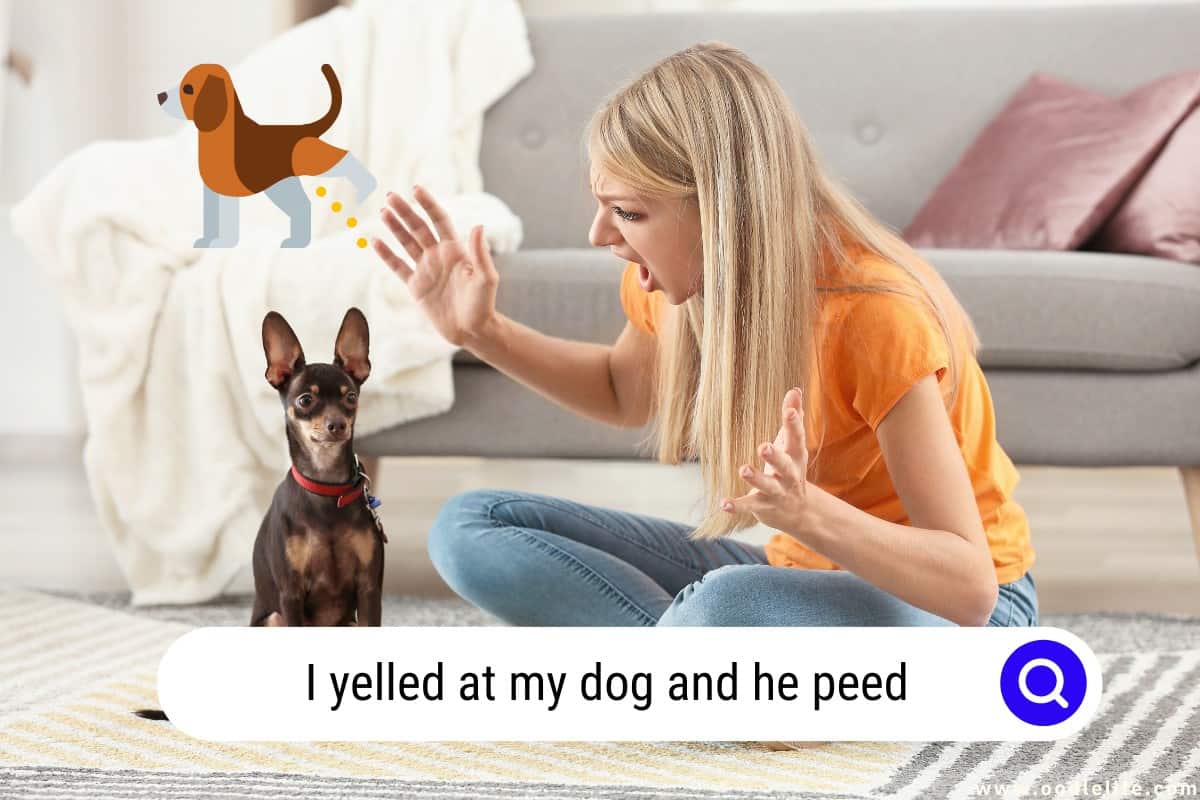
Submissive urination is a common behavior that occurs when a dog feels intimidated or threatened. When you yell at your dog, it’s possible they’re interpreting your raised voice as a sign of anger or dominance. In response, they might urinate to show submission and signal they’re not a threat.
Not only can this be embarrassing for both you and your pup, but it might also lead to concerns about your dog’s well-being and the overall dynamic of your relationship.
Understanding Reactions
A dog’s reaction to being yelled at can vary from one pup to another. In this section, we will examine some aspects that come into play when trying to comprehend a canine’s response to scolding.
Dog’s Perception
Just like humans, dogs perceive the world around them differently. Some canines may understand that they’re being scolded and attempt to appease their human, while others might not grasp the reason for the shouting. It’s important to remember that dogs may not always comprehend the intent of the yelling, causing confusion and stress.

Role of Fear
Fear plays a significant role in some dogs’ reactions to being yelled at. When a dog becomes scared, they might end up displaying submissive urination as a way of appeasing their human. This behavior is commonly seen in puppies, but it can also occur in adult dogs if they feel threatened or extremely anxious.

Adding humor or levity to this situation might not be ideal, given that an owner’s goal should be to foster a positive and healthy relationship with their dog. Consider that Fido might shake like a mailman nervously approaching a dog house when they’re yelled at. However, continually yelling at a dog can lead to long-term negative consequences, such as the dog becoming fearful or stressed in the owner’s presence.
Why Yelling Is Ineffective?
Yelling at your dog, although a common reaction when they misbehave, is far from being an effective training method. Instead of correcting their behavior, it often causes fear and confusion, leading to unwanted responses like submissive peeing.
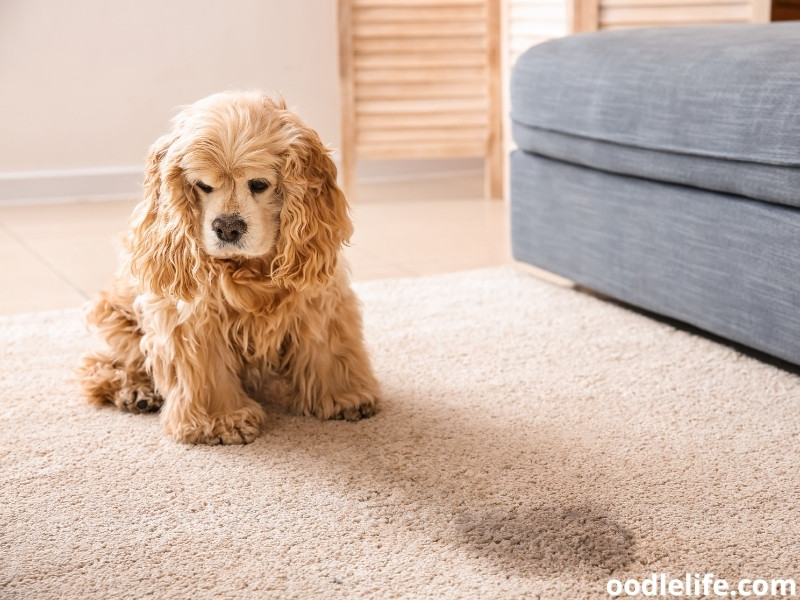
When a dog perceives a threat through raised voices, their natural response is to show submission or try to appease the dominant individual. This can manifest through actions like peeing, which communicates they pose no threat in the situation. This isn’t the desired outcome, and it’s clear that yelling isn’t helping the dog understand their mistake in any meaningful way.
Furthermore, a study has shown that dogs subjected to aversive training methods, like yelling, display increased stress behaviors such as yawning and lip-licking. Stressful situations affect not only your dog’s emotional well-being but also their ability to learn, making it harder for them to grasp what’s expected of them. Additionally, continuous yelling can strain the bond between you and your furry companion, which is definitely a “ruff” situation you’d both like to avoid.
Humorously put, if we’d prefer a quiet word over a loud shout ourselves, why would our canine friends enjoy it any less? Thus, it’s essential to consider alternative positive reinforcement techniques like praise, treats or other rewards, because who doesn’t love a treat? This way, your dog can learn faster, and you can maintain a good relationship, ensuring that your home remains a harmonious space instead of a stressful barky battleground.
Potential Consequences
Stress-Induced Behaviors
When a dog experiences fear, such as being yelled at, it may result in stress-induced behaviors. One common reaction is submissive urination, where the dog pees to show they pose no threat to you. But there’s more! Stress can also lead to other behaviors like excessive licking, chewing, or barking.
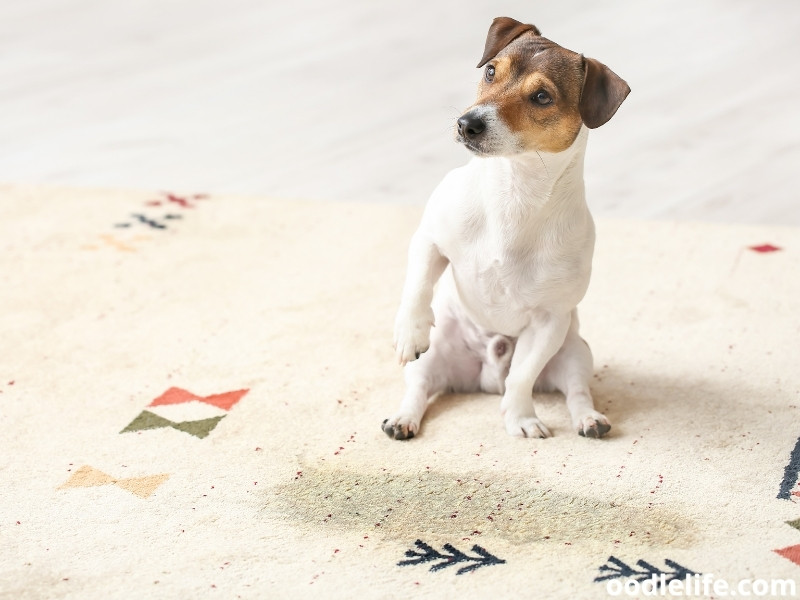
Imagine this: Fido just chewed your favorite shoes, and you can’t help but let out a frustrated yell. Suddenly, Fido pees right there on the spot. Oops! You’ve just encountered a stress-induced behavior, and now you have more than just chewed shoes to clean up.
Damage to Relationship
Yelling at your dog can not only cause stress-induced behaviors but also impact the relationship between you and your furry friend. Trust and bond-building take time, and unfortunately, yelling can harm that process. Picture this: You’ve just raised your voice at Fluffy, and now she’s avoiding you like the plague.

How can we rebuild that once unbreakable bond?
By using positive reinforcement and gentle discipline techniques, you can help repair any damage to your relationship with your dog. And hey, who knows? Maybe you’ll even learn a thing or two about effective communication while you’re at it.
Alternative Approaches
Dealing with a dog that pees when yelled at can be frustrating, but fear not, there are alternative approaches that can help. Changing the way we interact with our dogs can make a significant difference in their behavior.
Positive Reinforcement
Instead of raising your voice or using punishment, try using positive reinforcement. This method focuses on rewarding good behavior and ignoring unwanted actions. For example, when your dog performs a desired action, praise them and give them a treat.
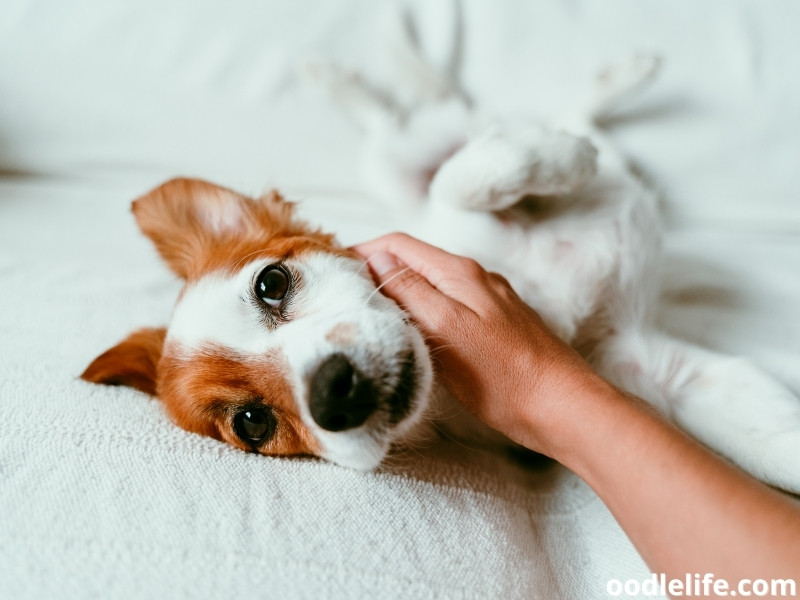
They’ll soon associate that action with positive outcomes, and you won’t have a puddle to clean up.
Anecdote time: One pet parent used this approach and found that their dog, which used to cower and pee at the slightest raised voice, became more confident and stopped the unwanted behavior. Positive reinforcement is like a magical treat that turns scared pups into brave, well-behaved companions.
Managing Triggers
Another crucial step in this process is identifying and managing the triggers that cause your dog’s submissive urination. It might be related to specific situations, like the presence of strangers or the sound of thunder. By understanding what makes your dog feel insecure, you can take steps to help them cope with those triggers.

For example, if your dog is fearful of loud noises, you can use calming techniques, like playing soft music or using a white noise machine, to make them feel more secure. Alternatively, if your dog is nervous around strangers, try organizing short, controlled meetings with new people who can offer them treats and gentle attention, slowly building up their confidence.
In conclusion, it’s essential to give our canine companions the support and understanding they need. By using positive reinforcement and managing triggers, we can help them overcome their fears and live happier, pee-free lives.
Rebuilding Trust
It’s natural for both you and your dog to feel a bit shaken after you raised your voice, but rebuilding trust is essential. Start with giving your furry friend some space and allowing them to approach you at their own pace. Remember, dogs are incredibly forgiving creatures and are likely to let bygones be bygones quickly.
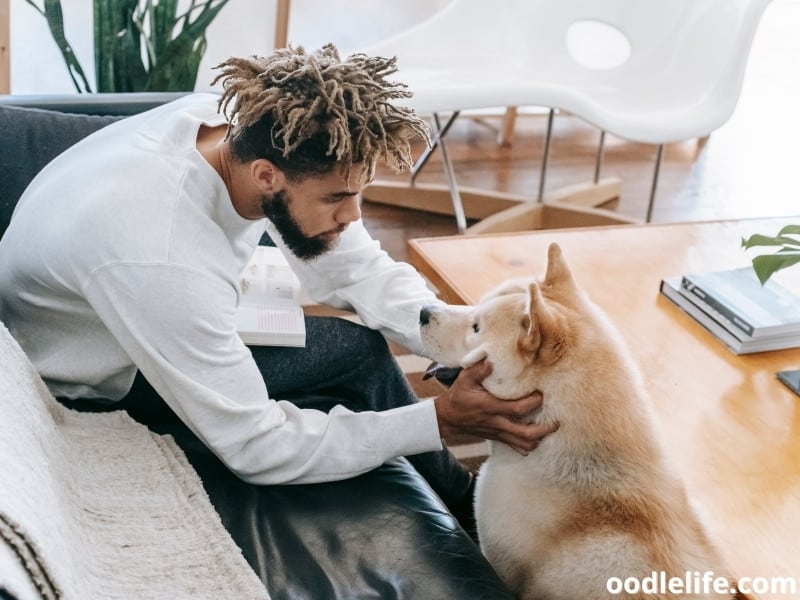
Now is the time for some soothing words and gentle gestures to reaffirm your bond. Instead of raising your voice, try communicating with your dog calmly and positively. If your dog seems fearful, use tasty treats and praise as motivators to reinforce good behavior.
As they say, actions speak louder than barks, and showing them love and patience speaks volumes.
A little humor can go a long way in rebuilding trust. Perhaps you can share some laughs with your dog by engaging in their favorite playtime activities, like fetch or tug-of-war. The goal here is to remind them that life is good, and you’re still their loving companion.
As time goes on, make a conscious effort to avoid raising your voice, as it can lead to submissive urination and damage the relationship. Instead, focus on positive reinforcement to guide your dog towards desired behaviors. Before you know it, the bond between you and your dog will be stronger than ever.
Seeking Professional Help
There comes a time when Spot’s bladder gives you a sign – it’s time to seek professional help! Dog trainers or behaviorists can lend a hand when you’re feeling overwhelmed. They possess the canine knowledge to tackle your pup’s submissive urination in a positive and effective manner.
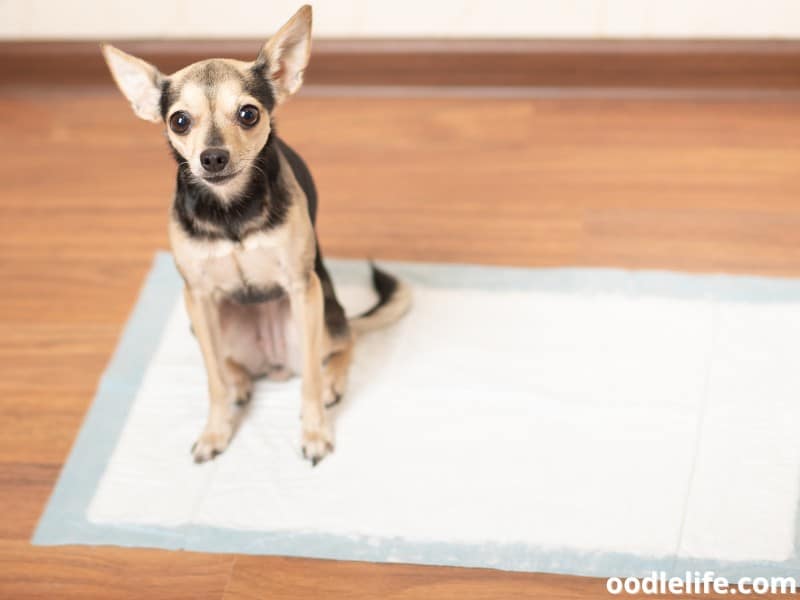
Yes, Fido might be a little embarrassed, but seeking expert assistance doesn’t make them any less lovable. She may be sharing her emotions in a leaky manner, but it’s crucial that we, as pet parents, find the right support to make her feel at ease. Remember, a happy pup means a happy human!
Feel free to reach out to your local dog training clubs or vets to explore your options. Besides, there’s no shame in getting a little help – that’s why these professionals exist! Your furry friend’s emotional well-being will thank you for it.
And so, our precious pup-parent journey continues, one puddle at a time… Stay patient, and always remember the golden rule: kindness is key when dealing with our sensitive, four-legged companions.